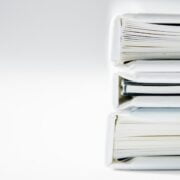
Navigating Tax Season: Tips and Resources from the New York State Department of Taxation and Finance
Tax season is the time of year when individuals and businesses are required to file their tax returns with the government. In the United States, tax season typically runs from January 1st to April 15th, although the exact dates may vary slightly from year to year. Filing taxes on time is important because it ensures that you are in compliance with the law and avoids any penalties or interest that may be imposed for late filing.
In this blog post, we will cover everything you need to know about tax season, including understanding your tax obligations, tips for filing your taxes, maximizing your tax savings through deductions and credits, electronic filing options, navigating tax forms, taxpayer rights and responsibilities, protecting yourself from tax fraud and scams, resources for taxpayers, and planning for next year’s tax season.
Key Takeaways
- Tax season is the time of year when individuals and businesses must file their tax returns.
- New Yorkers have specific tax obligations that they must understand and fulfill.
- Filing taxes can be complicated, but there are tips to avoid common mistakes.
- Deductions and credits can help maximize tax savings, but it’s important to understand the rules.
- Electronic filing is a convenient and secure way to file taxes, and there are resources available to help navigate the process.
Understanding Your Tax Obligations: A Guide for New Yorkers
If you are a resident of New York, it is important to understand the state’s tax laws and your obligations as a taxpayer. New York has its own income tax system, separate from the federal income tax system. This means that you will need to file a state tax return in addition to your federal tax return.
In general, anyone who is a resident of New York for any part of the year and has income from New York sources is required to file a New York state tax return. This includes both residents and non-residents who earn income in New York. However, there are certain exceptions and special rules for specific situations, such as military personnel and students.
New York has several different types of taxes, including personal income tax, sales tax, property tax, and business taxes. The amount of tax you owe will depend on your income level and other factors. To determine your tax liability, you will need to calculate your taxable income by subtracting any deductions or credits you are eligible for from your total income.
Tips for Filing Your Taxes: How to Avoid Common Mistakes
Filing taxes can be a complex process, and many taxpayers make mistakes that can result in delays or even penalties. One common mistake is failing to include all sources of income on your tax return. It is important to report all income, including wages, self-employment income, rental income, and investment income.
Another common mistake is making errors in calculations. This can include simple math errors or miscalculating deductions or credits. To avoid these mistakes, it is important to double-check your work and use tax software or a professional tax preparer if necessary.
Organizing your tax documents is also crucial for a smooth filing process. Keep all relevant documents, such as W-2s, 1099s, and receipts for deductions or credits, in one place throughout the year. This will make it easier to find the information you need when it comes time to file your taxes.
Deductions and Credits: Maximizing Your Tax Savings
| Category | Description | Example |
|---|---|---|
| Deductions | Expenses that can be subtracted from your taxable income | Mortgage interest, charitable donations |
| Credits | Direct reduction of your tax liability | Child tax credit, earned income tax credit |
| Standard deduction | A fixed amount that reduces your taxable income | 12,400 for single filers in 2020 |
| Itemized deduction | Actual expenses that can be deducted from your taxable income | Medical expenses, state and local taxes |
| Tax bracket | The range of income that is taxed at a certain rate | 22% tax bracket for income between 40,126 and 85,525 for single filers in 2020 |
Deductions and credits are two ways to reduce your taxable income and potentially lower your tax liability. Deductions are expenses that you can subtract from your total income, while credits are dollar-for-dollar reductions in the amount of tax you owe.
Common deductions include mortgage interest, state and local taxes, medical expenses, and charitable contributions. To claim these deductions, you will need to itemize your deductions on Schedule A of your tax return.
Credits can provide even greater tax savings than deductions because they directly reduce the amount of tax you owe. Common credits include the child tax credit, earned income credit, and education credits. To claim these credits, you will need to complete the appropriate forms or schedules and provide any necessary documentation.
Electronic Filing: The Benefits and How to Get Started
Electronic filing, or e-filing, is the process of submitting your tax return electronically to the government. There are several benefits to e-filing, including faster processing times, greater accuracy, and the ability to receive your refund more quickly.
To file your taxes electronically, you will need to use tax software or work with a professional tax preparer who offers e-filing services. The software or preparer will guide you through the process and help ensure that your return is complete and accurate.
There are several different options for electronic filing, including using commercial tax software, using the IRS’s Free File program, or working with a professional tax preparer. Each option has its own requirements and fees, so it is important to research your options and choose the one that best fits your needs.
Navigating Tax Forms: A Step-by-Step Guide
Tax forms can be confusing and overwhelming, especially if you are filing your taxes for the first time or have a complex tax situation. Understanding the different types of forms and how to fill them out correctly is crucial for a successful filing process.
The most common form for individual taxpayers is Form 1040, also known as the U.S. Individual Income Tax Return. This form is used to report your income, deductions, credits, and tax liability. It is important to carefully read the instructions for Form 1040 and any accompanying schedules or forms to ensure that you are providing all required information.
If you have income from self-employment or own a small business, you may need to file additional forms, such as Schedule C (Profit or Loss from Business) or Schedule SE (Self-Employment Tax). These forms require additional information about your business income and expenses.
Taxpayer Rights and Responsibilities: What You Need to Know
As a taxpayer, you have certain rights and responsibilities when it comes to filing your taxes. It is important to understand these rights and responsibilities so that you can exercise them effectively and comply with the law.
Taxpayer rights include the right to be informed, the right to quality service, the right to pay no more than the correct amount of tax, and the right to a fair and just tax system. These rights ensure that you are treated fairly and have access to the information and assistance you need to fulfill your tax obligations.
Taxpayer responsibilities include filing a complete and accurate tax return, paying taxes on time, keeping records of income and expenses, and responding to any notices or requests from the IRS. Failure to meet these responsibilities can result in penalties or other consequences.
Tax Fraud and Scams: How to Protect Yourself
Tax fraud and scams are unfortunately common during tax season. Scammers may impersonate IRS agents, send phishing emails or make fraudulent phone calls in an attempt to steal your personal information or money.
To protect yourself from tax fraud, it is important to be vigilant and aware of common scams. The IRS will never contact you by phone or email to request personal or financial information. If you receive a suspicious call or email, do not provide any information and report it to the IRS.
If you become a victim of tax fraud, it is important to take immediate action. Contact the IRS to report the fraud and take steps to protect your identity, such as placing a fraud alert on your credit report and monitoring your financial accounts for any unauthorized activity.
Resources for Taxpayers: Where to Find Help and Information
There are many resources available to taxpayers who need help or information about filing their taxes. The IRS website is a valuable source of information and provides access to forms, publications, and online tools.
In addition to the IRS website, there are also free resources available through community organizations, such as Volunteer Income Tax Assistance (VITA) programs. These programs offer free tax preparation services for individuals with low to moderate incomes.
If you need more personalized assistance, you may want to consider working with a professional tax preparer. Tax preparers are trained and experienced in preparing tax returns and can help ensure that your return is accurate and complete.
Planning for Next Year: Tips for a Smooth Tax Season Ahead
While tax season may be a stressful time, there are steps you can take throughout the year to make the process smoother and less overwhelming. One important step is to keep all relevant tax documents organized in one place. This includes W-2s, 1099s, receipts for deductions or credits, and any other documents that may be needed to complete your tax return.
Another important step is to estimate your tax liability for the next year. This can help you avoid any surprises at tax time and allow you to make any necessary adjustments to your tax withholding or estimated tax payments.
Finally, consider working with a professional tax preparer or using tax software to help you navigate the complexities of the tax code. These resources can help ensure that you are taking advantage of all available deductions and credits and minimize your tax liability.
In conclusion, tax season can be a stressful time for many individuals and businesses. However, by understanding your tax obligations, avoiding common mistakes, maximizing your tax savings through deductions and credits, filing electronically, navigating tax forms correctly, knowing your taxpayer rights and responsibilities, protecting yourself from fraud and scams, accessing available resources, and planning ahead for next year’s tax season, you can make the process smoother and less overwhelming. Being informed about your tax obligations is crucial for avoiding penalties and ensuring compliance with the law. Start preparing for next year’s tax season now to avoid any last-minute stress or surprises.
If you’re looking for more information on tax regulations and financial matters in New York State, you may find the article “Navigating Taxation and Finance in New York: A Comprehensive Guide” on Wave Magnets website quite helpful. This comprehensive guide provides insights into various tax laws, regulations, and financial strategies specific to the state of New York. Whether you are a business owner or an individual taxpayer, this article offers valuable information to help you navigate the complexities of taxation and finance in the Empire State. Check it out here.
FAQs
What is the New York State Department of Taxation and Finance?
The New York State Department of Taxation and Finance is a government agency responsible for administering and enforcing tax laws in the state of New York.
What are the responsibilities of the New York State Department of Taxation and Finance?
The New York State Department of Taxation and Finance is responsible for collecting taxes, processing tax returns, auditing taxpayers, and enforcing tax laws in the state of New York.
What types of taxes does the New York State Department of Taxation and Finance collect?
The New York State Department of Taxation and Finance collects a variety of taxes, including income tax, sales tax, property tax, estate tax, and corporate tax.
How can I file my taxes with the New York State Department of Taxation and Finance?
Taxpayers can file their taxes with the New York State Department of Taxation and Finance online, by mail, or in person at a tax office.
What happens if I don’t pay my taxes to the New York State Department of Taxation and Finance?
If you don’t pay your taxes to the New York State Department of Taxation and Finance, you may face penalties, interest charges, and legal action, including wage garnishment and property seizure.
How can I contact the New York State Department of Taxation and Finance?
Taxpayers can contact the New York State Department of Taxation and Finance by phone, email, or in person at a tax office. The department’s website also provides a variety of resources and information for taxpayers.


















